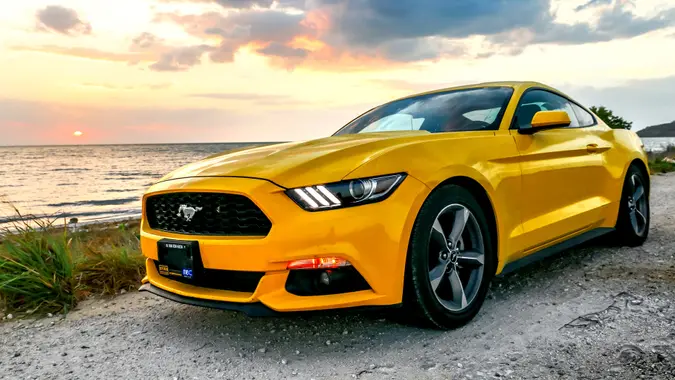
DarthArt / Getty Images
The automotive industry has witnessed numerous groundbreaking years where certain models became iconic due to their sales, innovation, and impact on car culture. Here are nine of the top-selling car years, highlighting models that defined an era and left their mark on the history of automobiles.
1. 1965: The Birth of the Ford Mustang
1965 saw the introduction of the Ford Mustang, a model that created a whole new genre — the ‘pony car’. Its affordable price and sporty design made it an instant hit, revolutionizing the American car market. The Mustang’s popularity was so immense that it sold over 400,000 units in its first year, far exceeding Ford’s expectations.
Mustang’s Sold in 1965: 600,000
2. 1984: The Year of the Minivan
In 1984, Chrysler released the Dodge Caravan and Plymouth Voyager, pioneering the minivan segment. These vehicles offered the space of a van with the drivability of a car, making them ideal for families. Their practicality and comfort drove massive sales, cementing their place in American suburban life.
Minivan’s Sold in 1984: 200,000
3. 1997: Toyota Prius – The Hybrid Revolution
The Toyota Prius, launched in Japan in 1997, was the world’s first mass-produced hybrid vehicle. Combining a gasoline engine with an electric motor, the Prius offered excellent fuel efficiency and reduced emissions. Its global impact was profound, paving the way for the future of hybrid and electric vehicles.
Prius’ Sold in 1997: 17,000 but since has sold 4.3 million
4. 2008: The Rise of the Electric Car – Tesla Roadster
The Tesla Roadster, released in 2008, was a groundbreaking electric sports car that challenged the notion that electric vehicles couldn’t be powerful and exciting. Its impressive performance and range demonstrated the potential of electric vehicles, inspiring a shift towards sustainable automotive technology.
Tesla’s Sold in 2008: Only 700 but since has sold 5 million
5. 1974: Volkswagen Golf – A Compact Legend
The Volkswagen Golf, introduced in 1974, became one of the most popular compact cars worldwide. Its front-wheel-drive, water-cooled engine, and spacious interior set new standards for compact car design and functionality. The Golf’s success helped Volkswagen become a major player in the global car market.
Volkswagen’s Sold: 300,000
6. 1990: Launch of the Mazda Miata MX-5
The Mazda Miata MX-5, debuting in 1990, brought back the classic roadster spirit with a modern twist. Its affordable price, lightweight design, and engaging driving experience won the hearts of car enthusiasts and the general public alike, making it one of the best-selling roadsters of all time.
Mazda’s Sold in 1990: 100,000
7. 2000: The Honda Insight – America’s First Hybrid
The Honda Insight, introduced to the American market in 2000, was the first hybrid car available in the United States. With its aerodynamic design and innovative Integrated Motor Assist system, the Insight was a significant step forward in introducing hybrid technology to a broader audience.
Honda’s Sold in 2000: 100,000
8. 2016: The Year of the SUV – Honda CR-V
In 2016, the Honda CR-V solidified its position as one of the top-selling SUVs. With its blend of reliability, fuel efficiency, and versatile design, the CR-V appealed to a wide range of buyers, from families to individuals seeking a practical yet stylish vehicle.
Honda’s Sold in 2016: 120,000
9. 2004: The Ford F-150 – Redefining the Pickup Truck
The Ford F-150 has been a best-seller for decades, but the 2004 model year brought significant enhancements that set a new standard for pickup trucks. With its improved power, comfort, and safety features, the F-150 continued to dominate the market, appealing to both work and leisure users.
Ford’s Sold in 2004: 3.33 million
Each of these years represents a milestone in automotive history, where specific models not only achieved impressive sales figures but also introduced innovations and concepts that shaped the industry. From the introduction of the pony car and the minivan to the rise of hybrid and electric vehicles, these top-selling car years reflect the evolving preferences and needs of consumers and the continuous innovation of car manufacturers.
Editor’s note: This article was produced via automated technology and then fine-tuned and verified for accuracy by a member of GOBankingRates’ editorial team.
More From GOBankingRates
